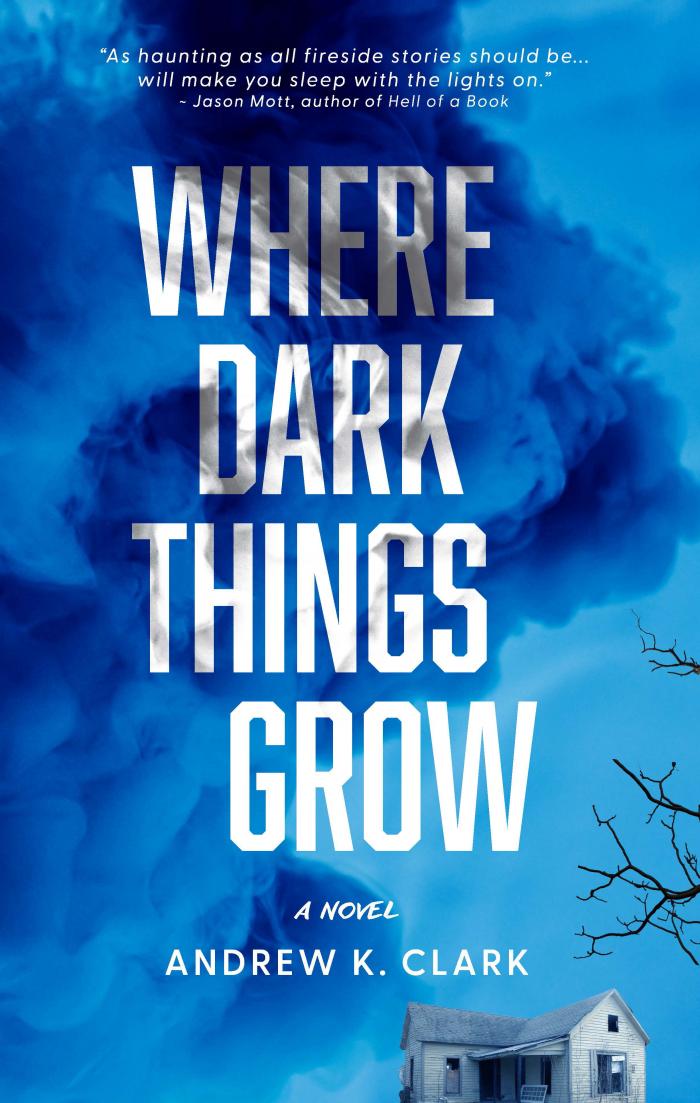You are here
Home › Books › Andrew K. Clark’s Powerful Debut Novel, 'Where Dark Things Grow', Is Masterpiece Of Appalachian Horror ›Andrew K. Clark’s Powerful Debut Novel, 'Where Dark Things Grow', Is Masterpiece Of Appalachian Horror
FTC Statement: Reviewers are frequently provided by the publisher/production company with a copy of the material being reviewed.The opinions published are solely those of the respective reviewers and may not reflect the opinions of CriticalBlast.com or its management.
As an Amazon Associate, we earn from qualifying purchases. (This is a legal requirement, as apparently some sites advertise for Amazon for free. Yes, that's sarcasm.)

Rising from the coastal plains of the American Eastern seaboard, the Appalachians are made up of a broken chain of peaks, ridges and dissected plateaus extending from Newfoundland to Alabama. The Catskills of New York, the Poconos, the Blue Ridge Mountains and Great Smoky Mountains are just some of the densely forested ranges constituting the chain, and even in this modern technological age, the Appalachians conjure visions of impenetrable, untamed wilds. The early Scots-Irish, Scandinavian, and German immigrants who settled those rural barrens brought with them a rugged, earthen work ethic and clannish pride for kin, but something else, too: beneath their Protestant Christian communities lurked the folk beliefs of the Old World they’d left behind, sprites and witchcraft and creatures of the night haunting the isolated bowers of man’s domain.
That’s the spooky backdrop of North Carolina native Andrew K. Clark’s extraordinary Cowboy Jamboree Press debut, Where Dark Things Grow, a novel exploring the varying shades of Appalachia in all its complex, wondrous, sometimes frightful glory.
During the onset of The Depression, fifteen-year-old Leo lives a troubled, rustic life with his mother and siblings in a remote valley (or ‘Holler’, as the locals call them); his brother Jacob died from a fever years earlier, his father, a degenerate drunk, has abandoned the family, and Leo’s mother flirts with madness from the constant emotional strain. With his younger sister Goldfish in increasingly ill health and his other brothers unwilling to help make ends meet, Leo spends his days working odd jobs for a local widow. One day she tells him the legend of the Wulvers, dangerous spirit wolves that inhabit the forests and prey upon travelers; her warning is initially dismissed as a tall tale, but to his terror Leo later encounters one of the beasts, though instead of becoming its victim, he finds himself mysteriously bound to the Wulver, able to call forth its shadowy teeth and pointed claws whenever his anger is aroused.
Emboldened by this newfound supernatural gift, Leo sets out righting wrongs as he sees fit, settling old scores and vowing to find his layabout father. Joining the quest is Leo’s plucky tomboy-cum-girlfriend Lilyfax and Ezra, a pious youth others mockingly call the ‘Little Priest’; both Lilyfax and Ezra quickly learn of Leo’s link to the Wulver, but even with its wrath on their side, they soon find themselves in peril. Unbeknownst to the trio, a sinister pagan cult has been abducting young girls and women in the area, keeping them encased in amber-like stasis in a magically protected forest. When the cultists set their sights on Lilyfax, Leo must summon both his courage and new powers to confront them, but will the Wulver abandon him when he needs it most? Or will the otherworldy ability destroy him before the cult does?
There’s much in Where Dark Things Grow for readers to enjoy; multiple perspectives add layer upon exciting layer to a plot that thickens pleasurably with each passing chapter. Crafted in the tradition of William Faulkner and Flannery O’Connor, Clark deftly blends the grotesque absurdism of Southern Gothic literature with the mountain-folk musings of Tom Wolfe while adding a hefty dose of Stephen King-style potency to the mix. The author’s use of language and dialogue perfectly invoke the time, place, and culture of the novel’s unique setting, fully immersing the reader in early-1930’s Prohibition/Depression-era America. Great and tender care has likewise been lavished upon each character to the point that even minor figures become fully-fleshed individuals, from tough-but-sweet Lilyfax to Leo’s thuggish cousin Declan to the story’s creepy-crawly adversaries.
On its simplest level, Where Dark Things Grow grants its audience welcomed escapism, and the long-simmering climax literally and figuratively explodes with thrills, chills, and pulse-pounding excitement. Yet serious and important themes about family, friendship, loss, betrayal, forgiveness, and the misuse of power are also explored; with the Shadow Wulver as his beckon call, Leo’s first impulse is to reverse his dismal economic fortunes, but he quickly succumbs to the temptation for revenge, feeding into the Wulver’s ever-lustful destructive appetite. His descent mirrors that of the cultists, captains of industry and politics who’ve traded their souls for earthly gain but who treat others—particularly women—as mere objects for their whimsy. Unlike them, however, Leo is grounded by his connection to those around him, and in the end learns there’s truly no power stronger than love.
Filled with danger, adventure, action, humor, horror, and heart to spare, Where Dark Things Grow is a superb novel, a stunning debut, and quite simply the best book I’ve yet reviewed in 2024. For those reasons and many more I feel compelled to bestow it the full 5 (out of 5) on my Fang Scale. This is the one to beat, everyone. I can’t wait for the sequel.


